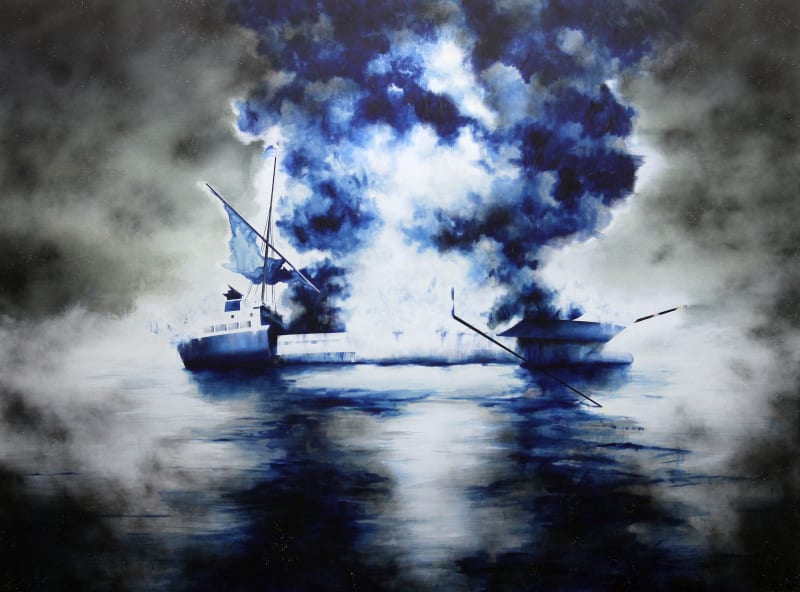For many North Americans, the lasting news image of Hurricane Maria, the monster storm that laid waste to Puerto Rico in 2017, wasn’t of the storm itself, but of a political photo-op that followed, when former President Donald J. Trump visited more than two weeks after the disaster had left the island desperately short on power, fresh water and food.
Trump was escorted to an emergency distribution center where, in a kind of cartoon version of imperial largess, he began lobbing rolls of paper towels into a crowd. The gesture read to some as a rebuke: “Clean up your mess.” (Trump had earlier confided to Twitter that Puerto Ricans “want everything to be done for them.”) Turning his back on the mild scramble that ensued, he purred to reporters: “There’s a lot of love in this room, a lot of love.”
There actually is a lot of love in the exhibition titled “No existe un mundo poshuracán: Puerto Rican Art in the Wake of Hurricane Maria” at the Whitney Museum of American Art in Manhattan. There’s also a tremendous amount of anger and sorrow, along with much beauty, in a carefully textured and moving show that is also among the first major surveys of contemporary Puerto Rican art in a leading United States museum in nearly 50 years.
(The last one I can recall was “The Art Heritage of Puerto Rico: Pre-Columbian to Present” in 1974, a collaboration between the Metropolitan Museum of Art and New York’s small, budget-challenged El Museo del Barrio, which has been consistently showing work by Puerto Rican artists living on and off the island since it opened in East Harlem in 1969.)
Organized by Marcela Guerrero, a Whitney associate curator, along with Angelica Arbelaez and Sofia Silva, present and past museum fellows, the exhibition takes its Spanish-language title from a line in a poem by the Puerto Rican writer Raquel Salas Rivera, which Guerrero translates twice, as “A post-hurricane world doesn’t exist” and as “there isn’t a world post-hurricane.” In her syntactically slippery second rendering, two ideas interlink.
Read the full article here.
